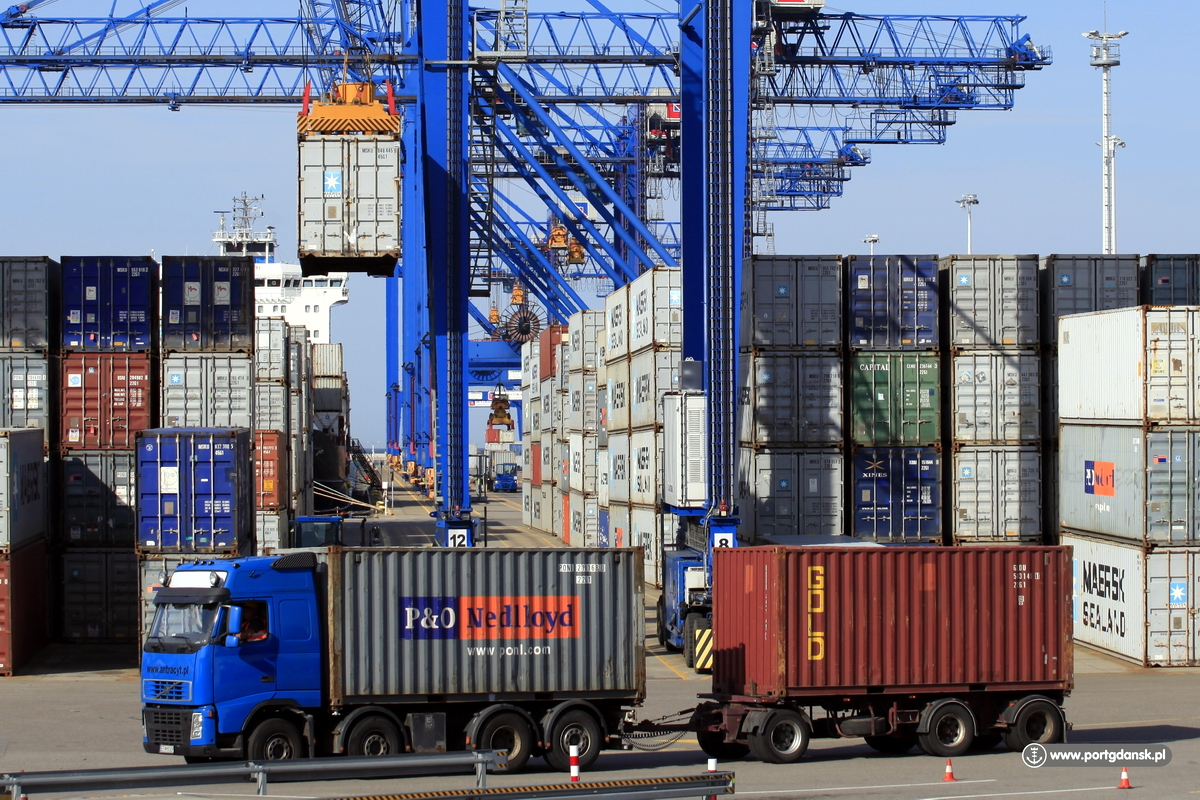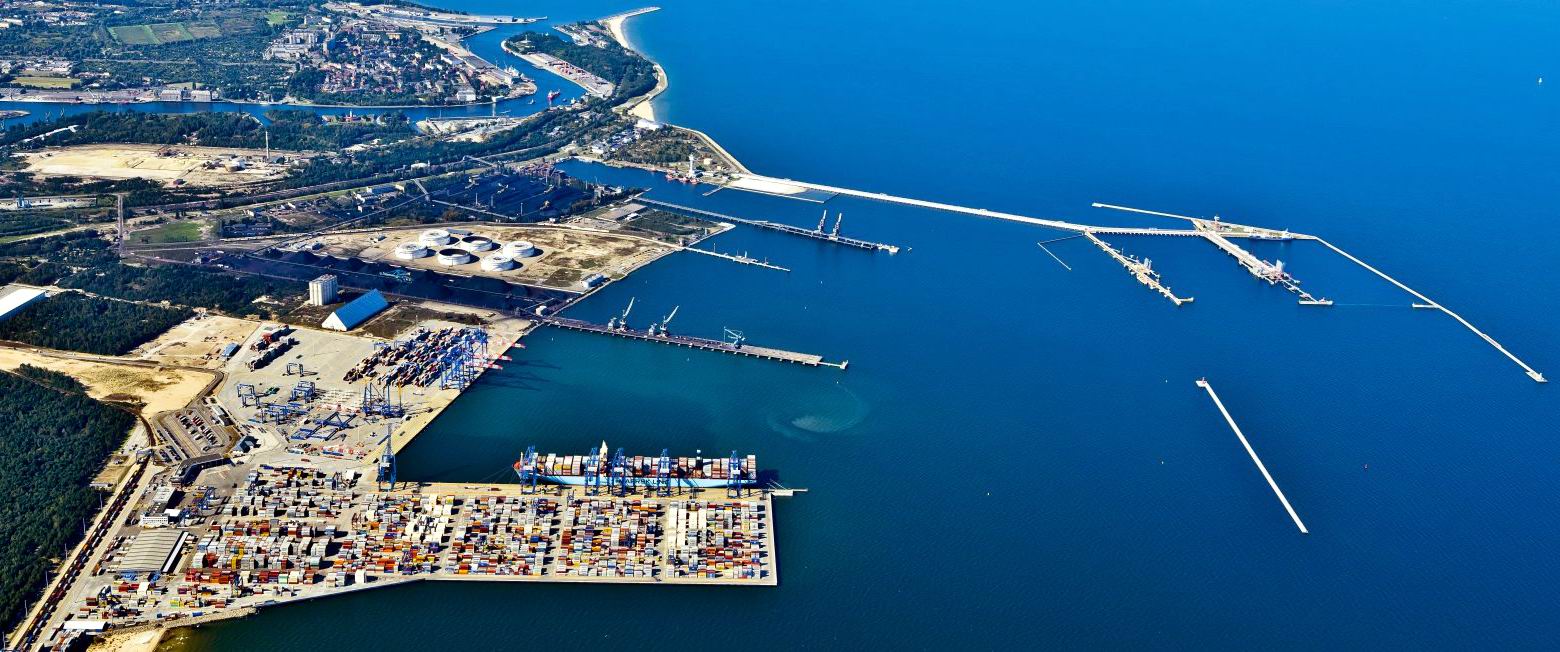Over 80 million tons of cargo handled in Polish sea ports


Another handling record was reached in Polish sea ports, with a barrier of 80 million tons of yearly turnover breached. Gdańsk remained Poland’s biggest sea port with over 37 million tons handled. All ports recorded a rise in cargo handled. Additional 2 million tons in Gdańsk, 1.7 million tons in Gdynia and 0.7 million tons in the ports of Szczecin and Świnoujście.
Positive changes have been registered in all analyzed sea ports. Fast growing turnover of general cargo, especially containerized (+4.0 million tons) as well as cole and coke (+0.5 million tons) and cereal (+0.37 million tons) are the main reasons for the above results. At the same time, ports registered a drop in turnover of other bulk cargo (-0.65 million tons), liquid fuels (-0.41 million tons) and ore (-0.17 million tons).
It is worth mentioning that the past year was good for ports located in the Baltic Sea region, with most of them recording a growth in turnover. Russia remains the biggest market in the region. Russian ports handled 236.6 million tons total in 2016 (+2.6% y/y). Sweden (164.2 million tons; +1%), Finland (93.1 million tons; +1.7%) and Denmark (84.9 million tons; +0.3%) were among other important players. Poland came in fifth.
Ust-Luga is currently the biggest Baltic port (93.4 million tons), ahead of two other Russian ports – Primorsk (64.4 million tons) and St. Petersburg (48.6 million tons). In 2016, Polish ports occupied the following spots in the ranking: 6th (Gdańsk), 8th (Szczecin and Świnoujście) and 11th (Gdynia).
A significant increase in general cargo turnover strengthened its position as a leader, meaning that general cargo makes up nearly half (47.4%) of all shipments. It may be noted that 53.2% of general cargo was handled in containers (20.4 million tons). Liquid fuels retained the second place (20.3%), losing a bit of significance in overall structure. They were followed by coal and coke (11.7%), other bulk cargo (9.3%) and cereal (9.0%).
After a year of cuts in container handling in Polish sea ports, mainly due to restrictions in trade with Russia, the container market grew significantly. It is important to note, that the 2 million TEU barrier has been breached once again in 2016.
Port of Gdańsk and the DCT terminal are undoubtedly the primary force driving the market. Expansion of the terminal (DCT II) and the creation of a new ocean connection operated by MSC resulted in an impressive increase in turnover (over 19%). Other Baltic ports also recorded good results in the area of container handling. It can be assumed that in 2016 the market came close to reaching 9 million TEU. This represents a growth of 5.3% in comparison to 2015.
It has to be emphasized that Poland became the leader in this market sector, moving ahead of Russia (2.02 million TEU). Sweden and Finland are also in a strong position, with a turnover of ca. 1.5 million TEU.
Ro-ro vessel handling is a particularly interesting market for port services, with its turnover in a state of dynamic growth. Freight vessel and passenger car transport increased again in 2016. In case of freight vessel transport growth reached an average of 15.7%, being a record result (622 thousand units).
A visible increase (5%) in cargo handling was also observed with regard to passenger cars. Sea ports also handle shipments of new passenger cars. 14 295 vehicles were handled in Gdańsk in 2016, most of them a part of the import stream. New cars were also handled in Gdynia, with 13 288 vehicles imported and exported.
The high growth in the ro-ro ferry market led to an increase in passenger traffic in ports. An increase of 4.4% was recorded in 2016, translating into 1.75 million passengers. This is mainly due to high frequency of cruise connections offered by Unity Line, Polferries and TT-Line and a relatively short cruise route (Swinoujscie-Trelleborg/ Ystad). It is worth noting that the passenger groups include both drivers of the ferried vehicles and tourists.
A segment of the port market, which should be treated as prestigious is the service of passengers in tourist traffic. After a lackluster year 2015 the market is bouncing back, which translates into an increase in call frequency in ports (+15) and consequently growth in the number of tourists visiting Poland. 95.7 thousand tourists visited Poland via cruise ship in 2016.
It has to be noted that Ports of Szczecin of Swinoujscie also serve passengers travelling via river. In 2016, 3,5 thousand passengers visited the Port of Szczecin. Unfortunately, this result marks a high (52%) decrease in the number of travelers in comparison to the previous year.
By courtesy of the Author: Dr hab. Maciej Matczak
Maritime University in Gdynia
Source: Actiaforum.pl
Full version with tables available at:
Port monitor. Polish Sea Ports in 2016. Summary and future outlook.



